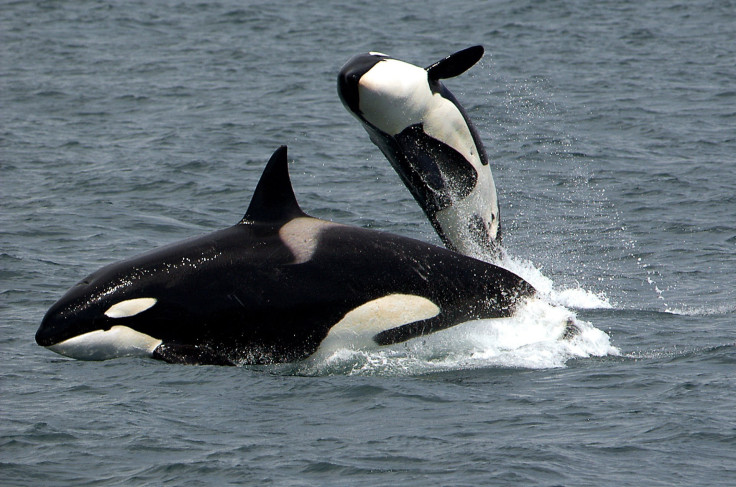
A pod of at least 10 orca whales trapped in sea ice near northern Japan has reportedly managed to escape successfully.
The pod was first spotted by a fisherman earlier this week on Japan's northern island of Hokkaido. Drone footage showed the whales struggling to breathe and to break free of the drift ice.
"At about 10 o'clock in the morning, we found about 13 killer whales with their heads sticking out of a hole in the ice," Seiichiro Tsuchiya, a Wildlife Pro employee, told NHK. "They seemed to have difficulty breathing. There were about three or four baby orcas. It looked like they weren't feeling well," Tsuchiya added. There was no clarity as to exactly how many whales were trapped in the ice.
They were spotted around 1 km off the coast of Rausu on the Shiretoko peninsula, a UNESCO world heritage site famous for its abundant wildlife.
In the video, they can be seen sticking their heads out of the water to breathe but unable to move away. Local officials were rushed to the spot to help them but could not find a way to rescue them. They could not find a way to move through the floating ice to make way for the orcas to escape.
The drone footage sparked public concern after it was broadcast on Japanese TV. An environmental group even urged the government to deploy icebreakers and help free the trapped orcas.
羅臼沖 シャチおよそ10頭
— NHK北海道 (@nhk_hokkaido) February 6, 2024
流氷に囲まれ身動きとれず
救出もできない状況
https://t.co/dJKCzVMUSd #北海道NEWSWEB pic.twitter.com/j45Z9h6X2v
However, on Wednesday, the officials monitoring the orcas found that they had managed to escape. "We believe they were able to escape safely," a local official in the seaside town of Rausu said.
This is not the first time that such an incident has been reported in Japan. In 2005, 10 orcas died after getting stuck in drift ice in the same area.
Drift ice blankets the sea off the eastern coast of Hokkaido, Japan's northernmost main island every year. The ice in and around Hokkaido is the lowest-altitude sea ice in the world. It has reportedly been declining due to global warming.
Orcas, also known as killer whales, are not really whales but belong to the dolphin family. They cannot stay underwater for too long and need to resurface every few minutes.
Orcas are social animals and live in pods of up to 30, which they stay in their whole lives. They are one of the world's most powerful predators. They are efficient hunters, preying on fish, squid, sharks, seals, and turtles. They can be found from the polar regions to the Equator. They use echolocation to communicate and hunt, making sounds that travel underwater.
Orcas can be recognised by their distinctive black-and-white colour and are very intelligent creatures. Weighing up to 5,443 kg and growing up to 23 to 32 feet (7 to 9.7 metres), the orca population is unknown according to the IUCN.







